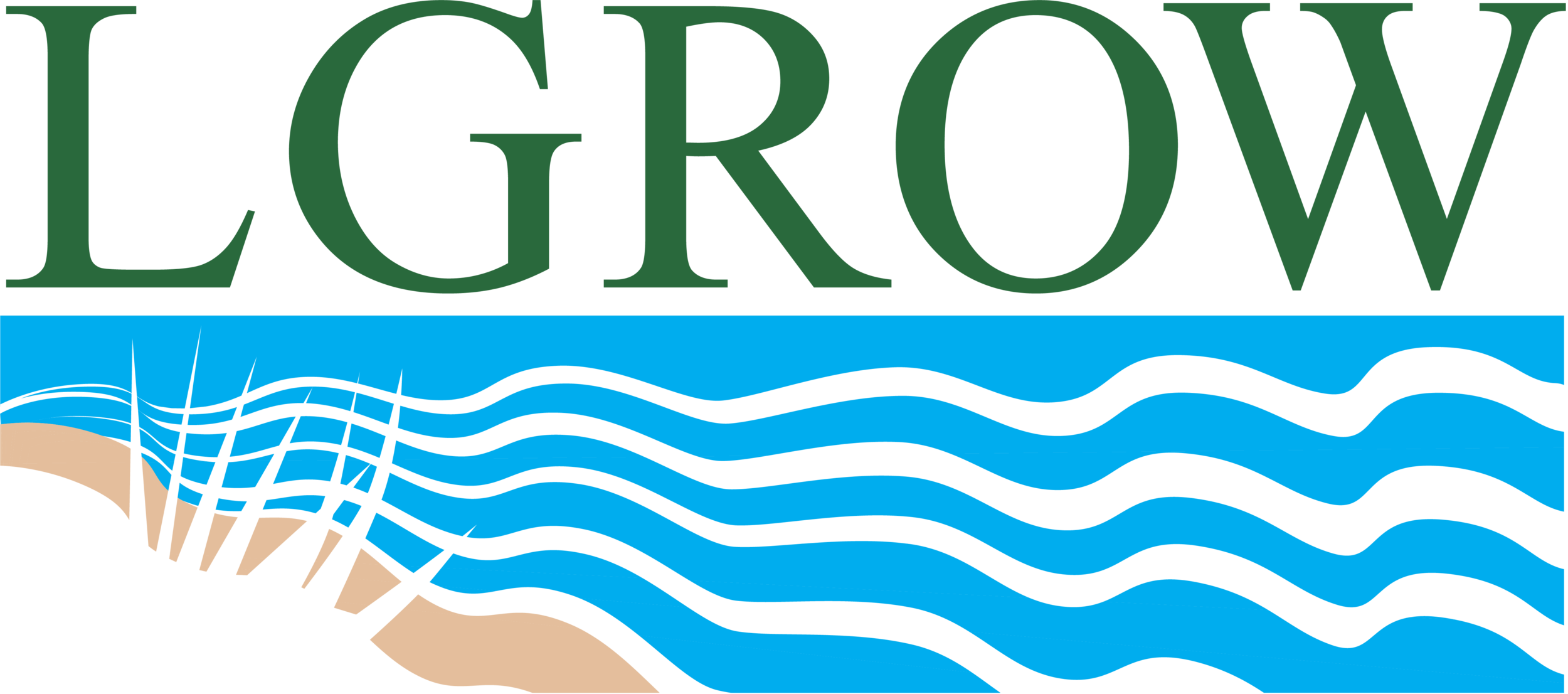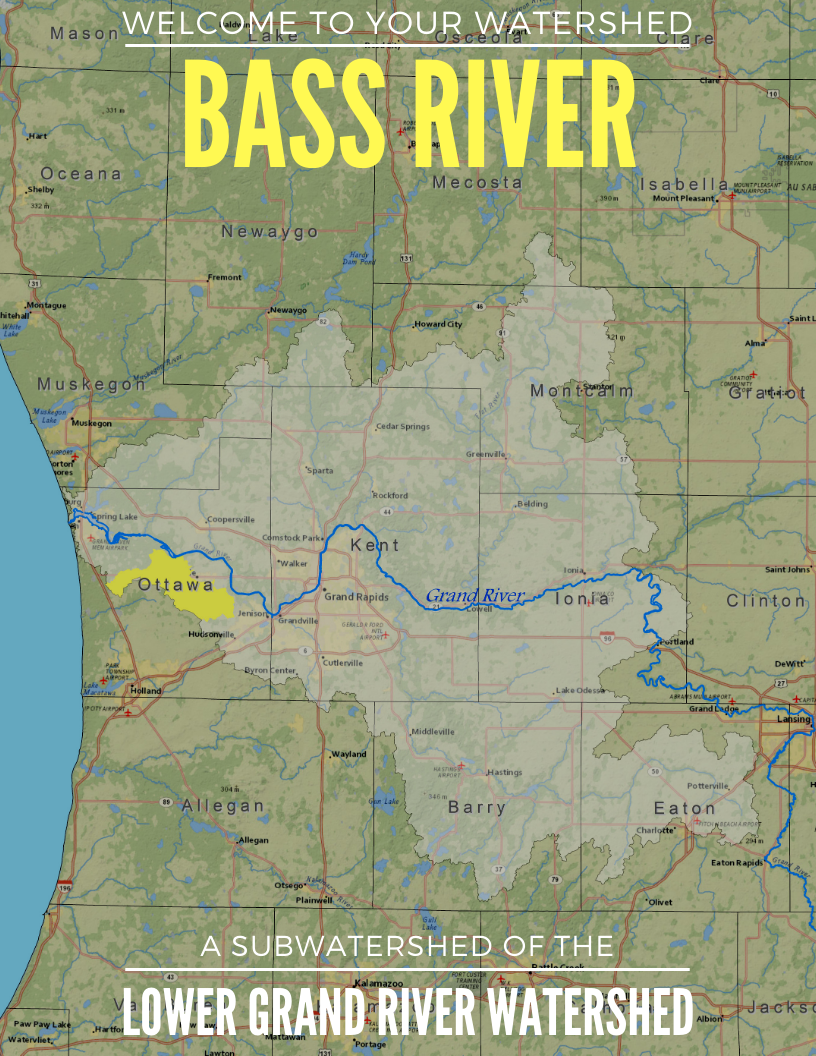November 2014 Update:
An environmental canine unit was called in to sample both watersheds for human sourced E. coli. The dogs are trained to only alert when they smell E. coli coming from humans. The accuracy of the dogs has been thoroughly tested and their work has been approved by the Michigan Department of Environmental Quality and the US Environmental Protection Agency. Results from the canine unit are displayed below.
Bass River Results:
Bass River Watershed– HUC Code: 04050006-0706; -0707 (Grand River)
Size and location
The Bass River sub watershed management unit encompasses 32,020 acres, and 20,297 acres (63%) is considered high quality agriculture land.The Bass River Watershed includes Bass Creek, Bass River, Bear Creek, Grand River, Little Bass Creek, and unnamed tributaries. The Bass River Watershed has 102.5 total stream miles with 1.7 miles of State Designated Trout Streams.
Read the subwatershed summary here
The Bass River/Deer Creek Restoration Project is an implementation proposal that lays out a framework to meet the TMDL allocations and reduce bacteria levels to attain water quality standards necessary to remove these use impairments.
Project Background:
The Bass River and Deer Creek restoration Project will address the high E. coliconcentrations in the Bass River and Deer Creek watershed, by working with landowners in these watersheds to remediate failing septic systems and assist agriculture producers in addressing natural resources concerns. Both of these watersheds’ E. coli levels exceed TBC and PBC WQS, and also are failing to attain designated use for a warm water fishery.
Goal:
The goal of this project is to reduce E. coli concentrations in the watersheds to meet WQS. The tasks assigned to meeting this goal will result in sediment reductions and therefore implement both E. coli and Biota TMDLs. Non-point sources and causes of pollution in these watersheds include: farm animal access to the streams, failing or poorly functioning septic systems, and agricultural run-off.
Action Plan:
The plan will address the highest priority implementation actions of cropland management, manure management, livestock management, vegetative buffering, and septic failures.
Project Sustainability:
Extensive outreach and education to producers and landowners will be conducted to utilize farm bill funds, build relationships, and serve as a base for future implementation practices.
Evaluation:
There are five measureable milestones related to E. coli (Table 6.2 LGRW WMP):
Implement manure management planning
Implement livestock management practices at access sites
Implement vegetative buffer practices
Encourage proper septic tank management
Implement cropland management practices
Success will be measured by quantifying the Best Management Practices (BMPs) under contracts associated with these milestones.
Number of waste storage facilities constructed/contracted
Number of acres contracted to be managed under Comprehensive Nutrient Management Plans (CNMPs)
Number of feet of livestock exclusions
Number of miles of filter strips contracted through Conservation Reserve Program (CRP)
Number of septic systems repaired/referred to local officials
Number of acres of cropland employing residue management techniques, installing cover crops or taking measures to manage filed tiles.
Your Land, Your Water, Your Michigan
Restoring Water Quality in the Bass River and Deer Creek Watersheds
The Ottawa Conservation District’s mission is to be your local resource for natural resources management, helping people conserve, maintain, and improve our natural resources and environment for future generations in Ottawa County. The Grand River is an important resource to many surrounding communities, providing transportation for goods and services, quality water for agriculture purposes, and four seasons of recreation. Currently Deer Creek and Bass River, two sub-watersheds of the lower Grand River, have water quality being compromised by human and non-human E. coli counts exceeding water quality standards for PBC and TBC recreation, and biota. The Bass River and Deer Creek are both tributaries to the Grand River, and have a direct impact on the lower Grand, which flows into Lake Michigan at Grand Haven. The Ottawa Conservation District has been granted Federal funds through the Michigan Clean Water Initiative to remediate failing septic systems and provide technical assistance for BMPs to agriculture producers in these watersheds. This grant will also provide a great opportunity to build relationships around the surrounding communities and unite with one another to accomplish the goals needed to protect our very important Michigan Waters and Lands.
The Ottawa Conservation District encourages landowners in the rural areas of these watersheds with onsite sewer disposal systems, to inspect their systems regularly. The Ottawa Conservation District has limited grant funded cost share available for septic repairs.
If you are an agriculture producer interested in Farm Bill programs and conservation practices please contact the Ottawa Conservation District at 616-846-8770 x 125 for technical assistance. Assistance can be provided for developing a competitive application for these programs. Additional grant funded cost share will be available for the second grant cycle for agriculture producers that will submit a commitment letter to the Ottawa Conservation District stating they would like to implement conservation practices on their lands. This is an option for producers who do not rank high enough for Farm Bill programs. For folks that are interested in conservation programs, further conservation practice information and program details can be found on Michigan NRCS Conservation Stewardship Program.






